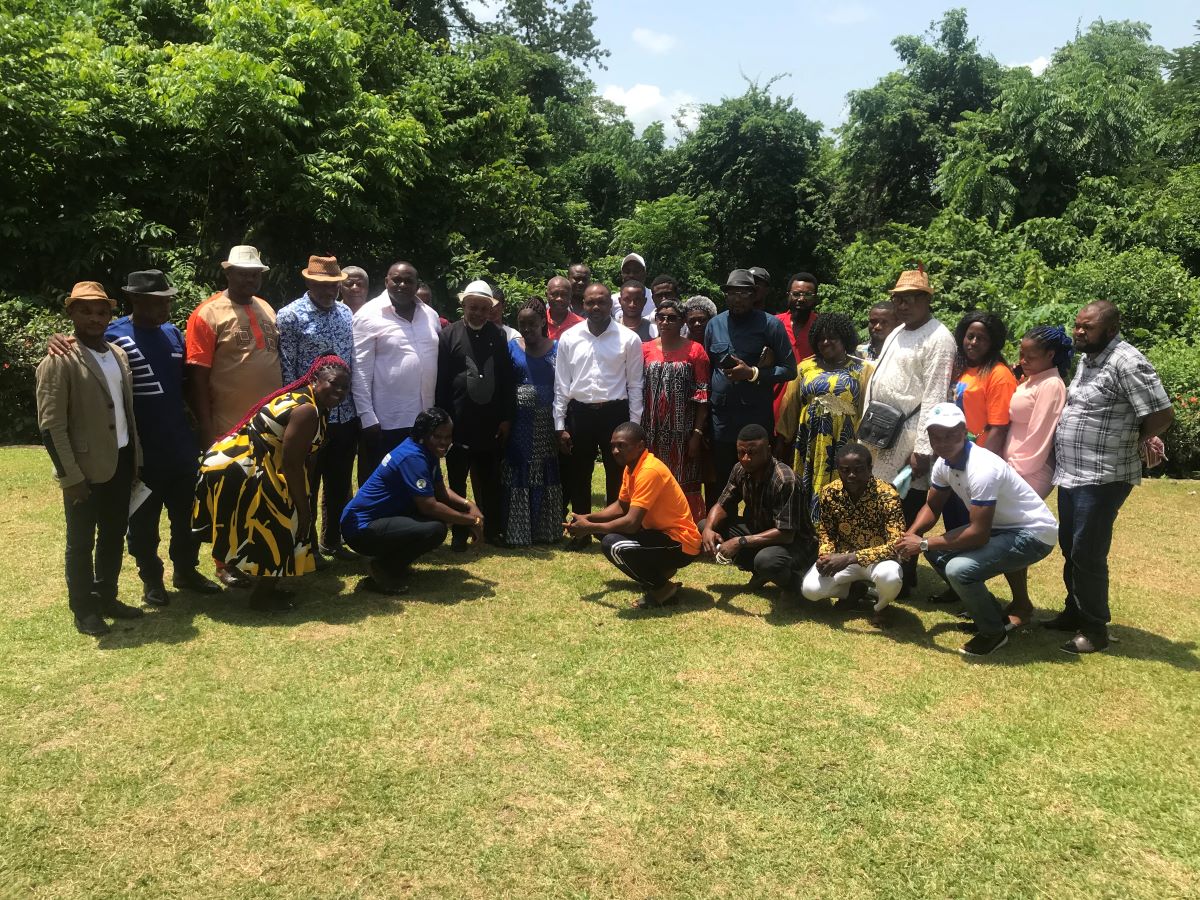Consultation and preliminary negotiations with six core conservation communities for a Conservation Development Agreement
As a Local Support Organization for the Mount Cameroon National Park Service, Global Hand Cameroon (GLOHA) actively works on livelihood and conservation activities in six communities in the Bomboko I Cluster, located just outside the national park.
In this role, GLOHA participated on 4 April 2024 in a conference with representatives from these six communities to discuss the establishment of a Cluster Conservation Development Agreement (CCDA). The conference was held at the Botanical Garden in Limbe and included officials from the World Wide Fund for Nature (WWF), the Program for the Sustainable Management of Natural Resources (PSMNR) and Mount Cameroon National Park (MCNP). The conference consisted of a number of activities, including the establishment of a Local Collaborative Management Committee (LCMC) and setting up a Cluster Collaborative Management Platform (CCMP).
The purpose of meetings such as this is to enable the conservation organizations to have frank and open discussions with the partner communities. After the target communities have been identified and mobilized, discussions include:
- clarifying micro zoning (i.e., drawing accurate maps of villages to show available resources),
- defining the roles and responsibilities of the various actors,
- identifying management issues (bushfires, encroachment into the park, poaching, etc.),
- defining local strategies,
- adopting sustainable management measures for peripheral zones,
- supporting the institutionalization of the co-management interventions,
- endorsement of the CCDA
- integrating the CCDA into the Communal Development Plan (CDP), and
- protecting the management areas.
During the conference, participants were encouraged to work in groups with respect to their communities of origin. The participants did a micro zoning of their various communities, after which they were requested to do resource mapping on their various micro zoning. This exercise is very important in that it enables the conservation organizations to know the various resources that are available in the park and the peripheral areas, as well as the various administrative units and social amenities that are available. In that light, livelihood interventions for communities can be well strategized and targeted. In addition, it facilitates the planning of conservation activities.
Ultimately, the target communities undertake to uphold, promote and assist in conservation activities to ensure biodiversity sustainability. In return, they receive benefits through focused group engagement strategies and community interest projects that can substantially improve community livelihoods.
Collaborative management is an essential tool in managing protected areas and administering conservation activities within the Mount Cameroon National Park and its peripheries. We are pleased that local communities and conservation organizations are working together to benefit both the communities and the area’s remarkable biodiversity.



